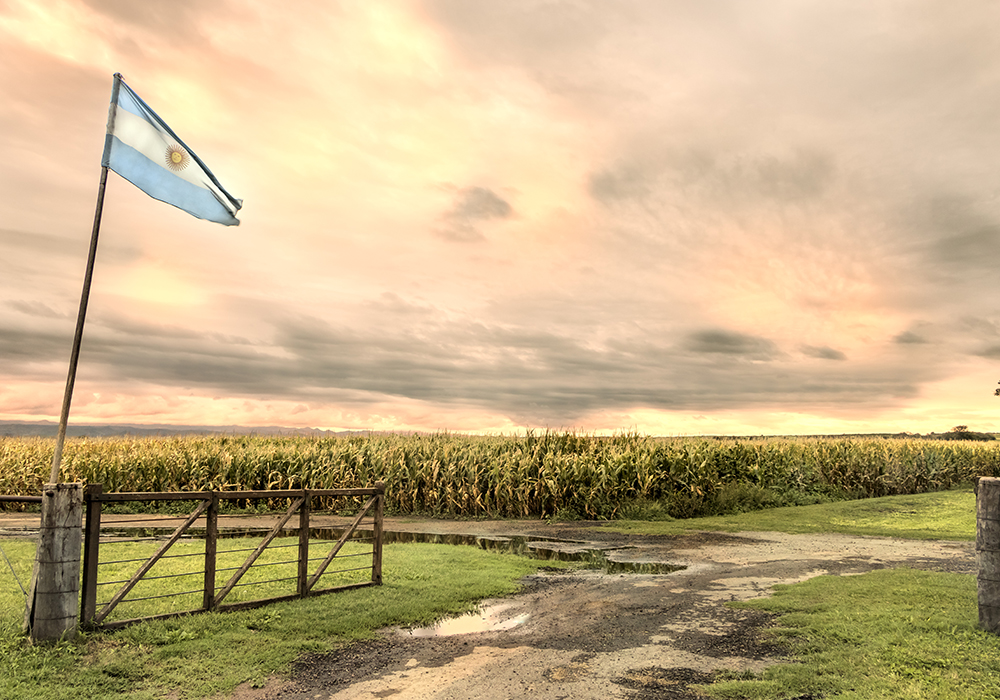RIO DE JANEIRO, BRAZIL – Drought in the coming months in Argentina, due to a repeat of the La Niña weather phenomenon, threatens the new 2021/22 soybean and corn seasons that suffered from the effects of the event last season, analysts said.
Argentina is the world’s leading exporter of soybean oil and meal and the third-largest exporter of corn. However, Argentine fields will likely suffer from a lack of rainfall for the second year in a row due to the impact of the weather phenomenon.
Read also: Check out our coverage on Argentina
“It’s going to be a tough six months,” Germán Heinzenknecht, a meteorologist at the Applied Climatology Consultancy (CAA), told Reuters, confirming what is practically a given in the scientific world: the return of La Niña between September and February.

Corn sowing begins in Argentina in September, while soybeans go into the ground in October and require adequate moisture.
However, an arid southern winter in key agricultural areas will exacerbate the impending lack of precipitation. “The precipitation pattern will not correct itself; at most, it may normalize sector by sector,” Heinzenknecht said.
“In the last 35 years, there have been three consecutive La Niña seasons: three of the worst soybean and corn seasons in Argentina,” warned the Rosario Stock Exchange (BCR). BCR now estimates the 2021/22 soybean and corn harvests at 49 million and 55 million tons, respectively.
According to the Buenos Aires Grain Exchange (BdeC), in the 2017/18 campaign, a drought caused by La Niña – preceded by the same climatic event in the previous cycle – soybean production was 35.5 tons, and corn production was 34 million tons.
La Niña, which consists of an acceleration of the equatorial winds (trade winds) that causes a cooling of the Pacific Ocean at the equator, manifests itself in Argentina with a decrease in precipitation in agricultural regions by 20 to 30% of the usual level, BCR explained in a report.
On the other hand, the event would occur between December and February, the warmest months in the South American country and a key period for developing and building yields of Argentina’s two main crops.
FEAR OF FARMERS
“We are watching what is happening with concern,” said Lisandro Perrotta, secretary of the Rural Society of Pergamino, a traditional farming village in northern Buenos Aires province.
“Of the fields in the area, there are none left with subsoil watercourses (“napas”), and you need 300 to 400 millimeters of rainfall in two months to restore them, which is impossible,” Perrotta explained. “We are thinking about 2008,” he added.
Argentina’s 2008-09 crop year was hit by one of the worst droughts in decades. The soybean crop totaled 32 million tons and the corn crop 16.2 million tons.
Meanwhile, the occurrence of a new La Niña is dampening prospects for an improvement in Argentina’s Paraná River level, which carries about 80% of the country’s agricultural exports and is currently at its lowest level in 77 years.
If there is normal rainfall in some parts of Argentina, “it will not serve to correct the flow of the rivers, which is extremely worrying because of the logistics involved,” Heinzenknecht said.
The Parana’s elevation in Argentina is being affected by a unique drought in Brazil, a specialist told Reuters, adding that the drought will extend into next year. Because of this drastic drop, ships will have to load 25% of goods at the agro-port of Rosario.

